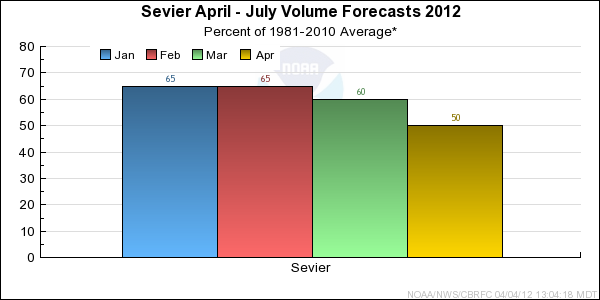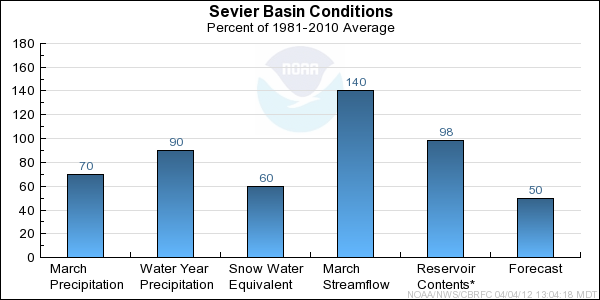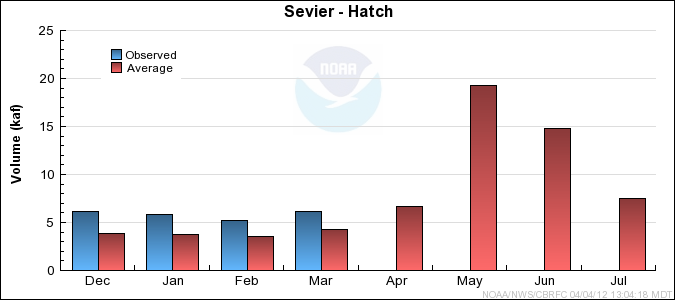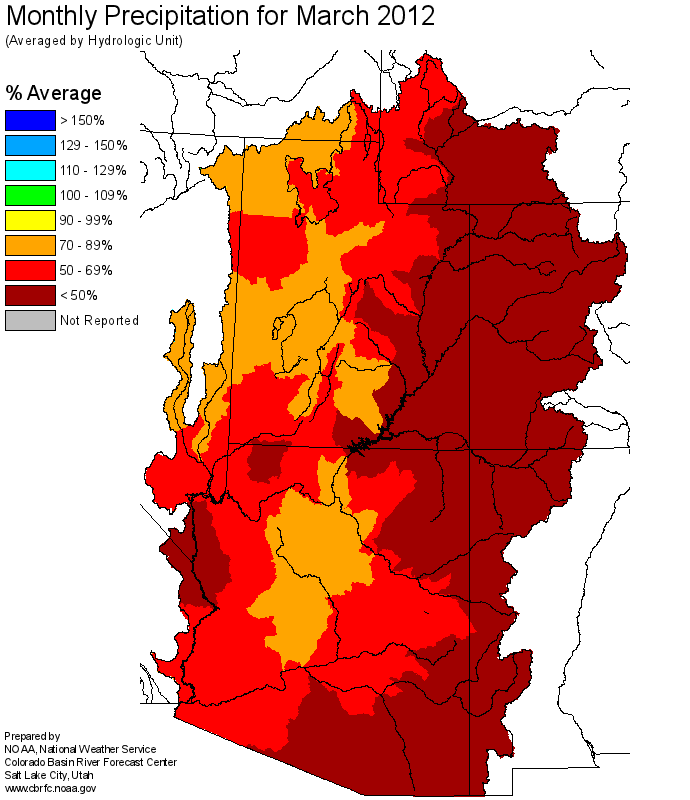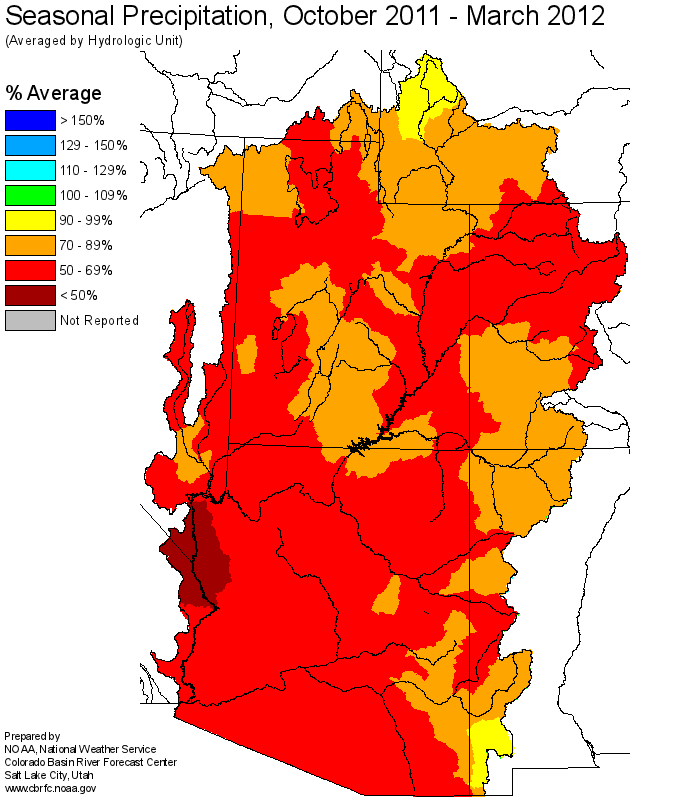The following conditions influenced this month's forecasts:
Precipitation:
Seasonal October through March
precipitation was 90 percent of average.
March
precipitation was 70 percent of average in the Sevier River basin.
Streamflow:
Streamflow for the Sevier River at Hatch was 140 percent of average for March.
Snowpack:
April 1st snow water equivalent was 60 percent of average for the overall Sevier River Basin.
For the Sevier River headwaters, the April 1st snow water equivalent was 55 percent of average.
Sevier River Drainage
Snow Plot.
Sevier River Basin Headwaters
Snow Plot.
Lower Sevier River Basin Below Piute
Snow Plot.
Soil Moisture:
Modeled
soil moisture content was above average in the Sevier River headwater areas going into the winter.
Climate Forecasts:
Generally, climate scenarios like El Nino and La Nina do not strongly influence conditions in the Sevier River Basin.
The southern part of the basin sees more of an influence from El Nino and La Nina than the northern part of the basin does.
However, even in the southern part of the basin, the statistical correlations between climate indices like the Southern Oscillation Index and streamflow volumes are minor.
As such, climate conditions are given only low weight, if any, in our water supply forecasts for the Sevier River basin.
Forecast Summary:
Due to a warm and dry March, snowpack conditions in the Sevier River Basin have deteriorated since March 1st. The snowpack is much below average.
April 1st snow water equivalent was 60 percent of average for the overall Sevier River Basin, while it was slightly lower in the Sevier River headwaters at 55 percent of average.
Higher than average baseflows continue to occur in the Sevier River basin.
Current
April through July Seasonal volume forecasts
range between 43 and 66 percent of average. The median April through July forecast volume is 50 percent of average.
The forecasts for the Sevier River at Hatch, the Sevier River near Kingston, the East Fork of the Sevier River, Piute Reservoir, and the Sevier River near Gunnison are 'Regulated or Observed' flow forecasts rather
than 'Natural or Unregulated' forecasts, which are corrected for all upstream diversions.
Differences between the full period forecasts and the residual forecasts may not exactly equal the actual observed volumes due to rounding conventions (see Definitions section).


